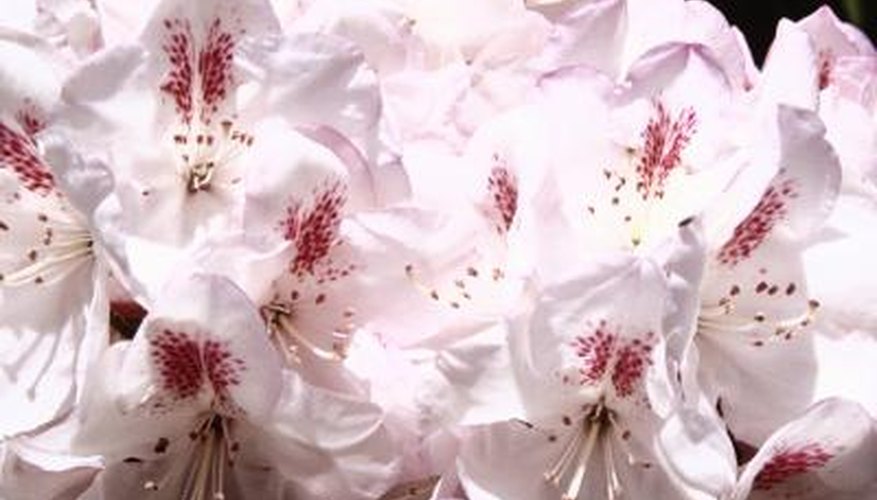Often referred to as "the king of the shrubs," the rhododendron plant is known for its large, colourful flowers. Although these flowers naturally occur in pink, red, purple or white colours, changing the pH of the soil or introducing different colours of water can give them a variety of shades and highlights.
The rhodendron plant
First brought to Pennsylvania in the mid 1700s, the plant can now be found throughout the US and UK. While its preference for cool, humid climates and acidic soil makes it difficult to grow in some areas, its long-lasting blooms and brilliant colours make any extra care more than worthwhile. Members of the rhododendron family include azaleas, which are deciduous plants that often spread out more than 8 feet (2.4 m) while true rhododendrons are evergreens that can grow to 80 feet (240 m).
Soil pH
A study recorded by G.M. Idorn in the "Journal of the American Rhododendron Society" noted changes in rhododendron colours after hard winters in Scotland and when the pH of the soil changed. This study reported paler yellows and bluer blues, attributed to different potting materials or the harsh winter or both. Further studies showed that increased soil acidity due to heightened industrialisation coupled with the use of some mulches was likely responsible for the colour changes.
- A study recorded by G.M.
- Idorn in the "Journal of the American Rhododendron Society" noted changes in rhododendron colours after hard winters in Scotland and when the pH of the soil changed.
- This study reported paler yellows and bluer blues, attributed to different potting materials or the harsh winter or both.
Coloured water
Many florists have long offered green carnations or other colours not found in nature for St. Patrick's Day or other special occasions. Anyone can apply their techniques to flowers of any colour, although the colour changes in white flowers are most dramatic. All that is needed for these changes are freshly cut flowers and containers filled with coloured water The coloured water is the result of adding food colouring. Since it will take a while for the water to move all the way up the stem to the flower, let the flower stay in the coloured water for at least one day.
- Many florists have long offered green carnations or other colours not found in nature for St. Patrick's Day or other special occasions.
- Anyone can apply their techniques to flowers of any colour, although the colour changes in white flowers are most dramatic.
Other colour changes
It's also possible to have multicoloured blooms by splitting the stems vertically and placing each half in a vase with coloured water. Each part of the stem will draw up the water from its vase; if each vase has different coloured water, the flower should have two different colours. Allow at least a day to ensure all colouring is complete.
